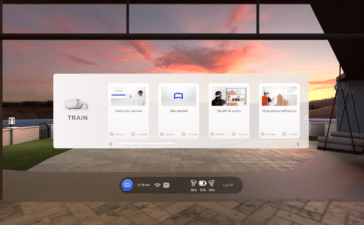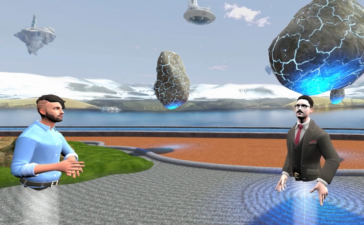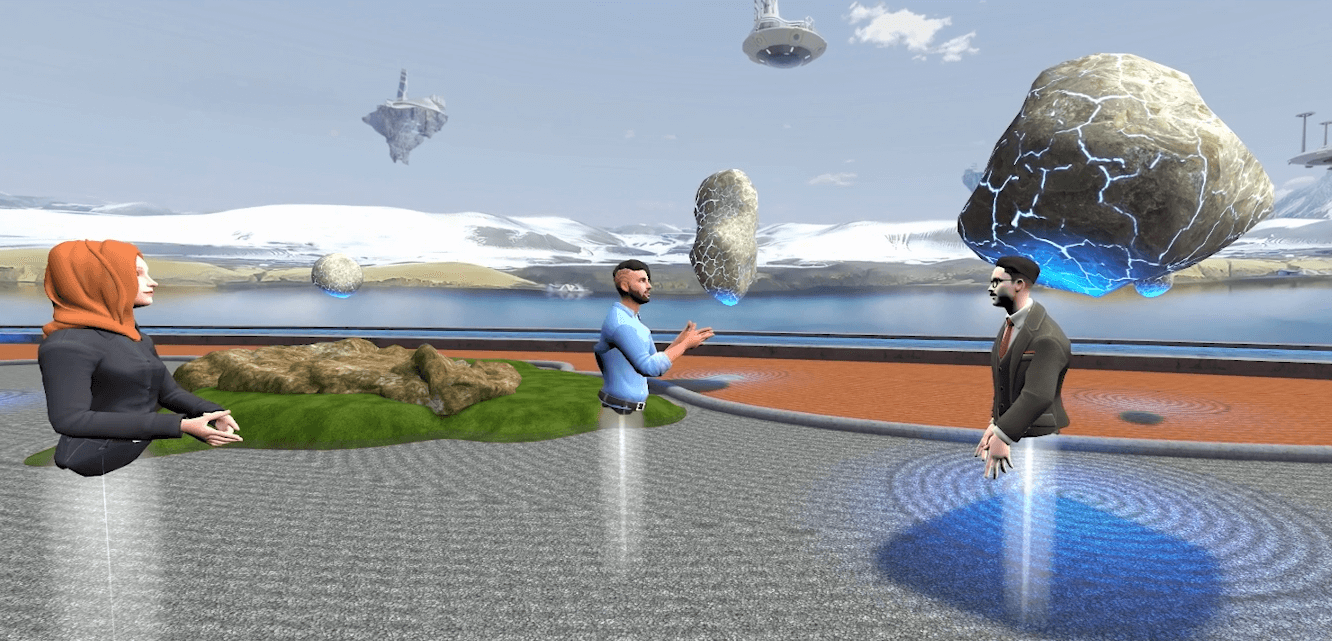Strivr Enhances Immersive Learning With Generative AI, Equips VR Training Platform With Mental Health and Well-Being Experiences
Strivr, a virtual reality training solutions startup, was founded as a VR training platform for professional sports leagues such as the NBA, NHL, and NFL. Today, Strivr has made its way to the job training scene with an innovative approach to employee training, leveraging generative AI (GenAI) to transform learning experiences.
More Companies Lean Toward Immersive Learning
Today’s business landscape is rapidly evolving. As such, Fortune 500 companies and other businesses in the corporate sector are starting to turn to more innovative employee training and development solutions. To serve the changing demands of top companies, Strivr has secured $16 million in funding back in 2018 to expand its VR training platform.
Research shows that learning through VR environments can significantly enhance knowledge retention, making it a groundbreaking development in employee training.
Unlike traditional training methods, a VR training platform immerses employees in lifelike scenarios, providing unparalleled engagement and experiential learning. However, this technology isn’t a new concept at all. Companies have been incorporating VR into their training solutions for several years, but we’ve only recently seen more industries adopting this technology rapidly.
The Impact of Generative AI on VR Training Platforms
Walmart, the largest retailer in the world, partnered with Strivr to bring VR to their training facilities. Employees can now practice in virtual sales floors repeatedly until they perfect their skills. In 2019, nearly 1.4 million Walmart associates have undergone VR training to prepare for the holiday rush, placing them in a simulated, chaotic Black Friday scenario.
As a result, associates reported a 30% increase in employee satisfaction, 70% higher test scores, and 10 to 15% higher knowledge retention rates. Because of the VR training’s success, Walmart expanded the VR training program to all their stores nationwide.
Derek Belch, founder and CEO at Strivr, states that the demand for the faster development of high-quality and scalable VR experiences that generate impactful results is “at an all-time high.”

As Strivr’s customers are among the most prominent companies globally, they are directly experiencing the impact of immersive learning on employee engagement, retention, and performance. “They want more, and we’re listening,” said Belch in a press release shared with ARPost.
So, to enhance its VR training platform, Strivr embraces generative AI to develop storylines, boost animation and asset creation, and optimize visual and content-driven features.
GenAI will also aid HR and L&D leaders in critical decision-making by deriving insights from immersive user data.
Strivr’s VR Training Platform Addresses Employee Mental Health
Strivr has partnered with Reulay and Healium in hosting its first in-headset mental health and well-being applications on the VR training platform. This will allow their customers to incorporate mental health “breaks” into their training curricula and address the rising levels of employee burnout, depression, and anxiety.
Belch has announced that Strivr also partnered with one of the world’s leading financial institutions to make meditation activities available in their workplace.
Meditation is indeed helpful for employees; the Journal of the American Medical Association recently published a study that showed that meditation can help reduce anxiety as effectively as drug therapies. Mindfulness practices, on the other hand, have been demonstrated to increase employee productivity, focus, and collaboration.
How VR Transforms Professional Training
With Strivr’s VR Training platform offering enhanced experiential learning and mental well-being, one might wonder how VR technology will influence employee training moving forward.
Belch describes Strivr’s VR training platform as a “beautifully free space” to practice. Employees can develop or improve their skills in a realistic scenario that simulates actual workplace challenges in a way that typical workshops and classrooms cannot. Moreover, training employees through VR platform cuts travel costs associated with conventional training facilities.

VR training platforms also contribute to a more inclusive and diverse workplace. Employees belonging to minority groups can rehearse and tailor their behaviors in simulated scenarios where a superior or customer is prejudiced toward them, for instance. When these situations are addressed during training, companies can protect their employees from these challenges and prepare them.
What’s Next for VR Training Platforms?
According to Belch, Strivr’s enhanced VR training platform is only the beginning of how VR will continue to impact the employee experience.
So far, VR training platforms have been improving employee onboarding, knowledge retention, and performance. They allow employees to practice and acquire critical skills in a safe, virtual environment, helping them gain more confidence and efficiency while training. Additionally, diversity and inclusion are promoted, thanks to VR’s ability to simulate scenarios where employees can tailor their behaviors during difficult situations.
And, of course, VR training has rightfully gained recognition for helping teach retail workers essential customer service skills. By interacting with virtual customers in a life-like environment, Walmart’s employees have significantly boosted their skills, and the mega-retailer has implemented an immersive training solution to all of its nearly 4,700 stores all over America.
In 2022, Accenture invested in Strivr and Talespin to revolutionize immersive learning and enterprise VR. This is a good sign of confidence in the industry and its massive potential for growth.
As we keep an eye on the latest scoop about VR technology, we can expect more groundbreaking developments in the industry and for VR platforms to increase their presence in the employee training realm.





